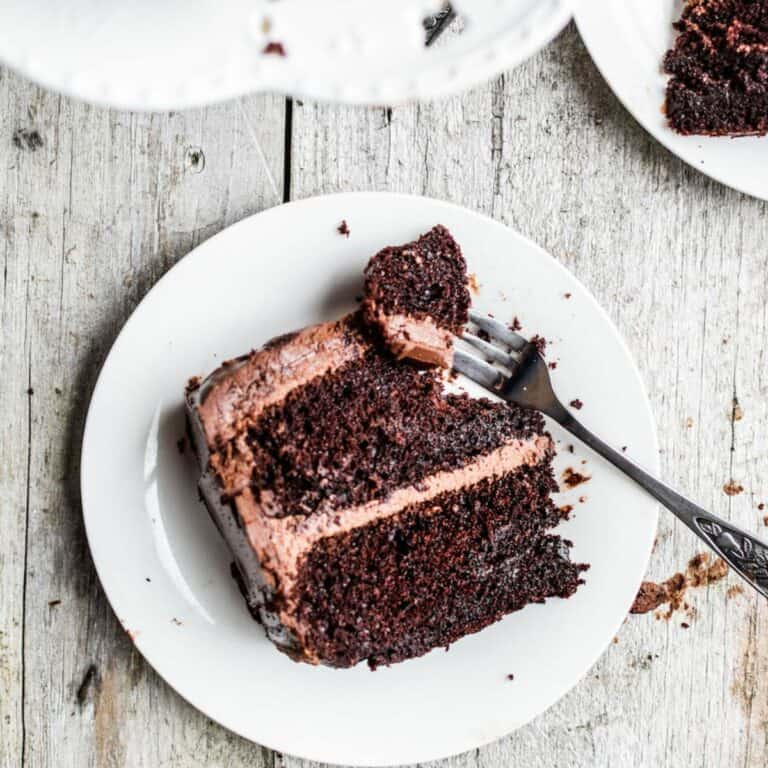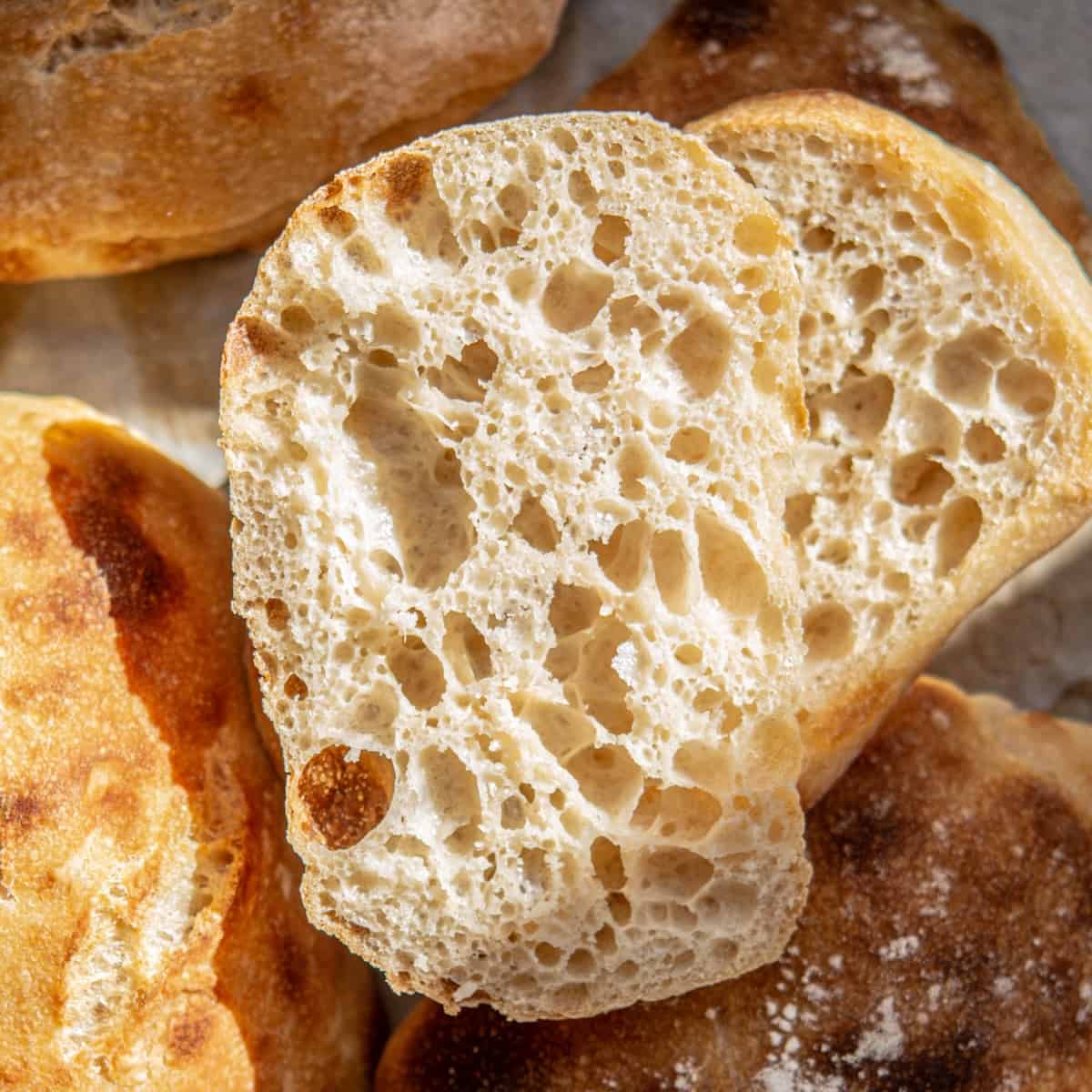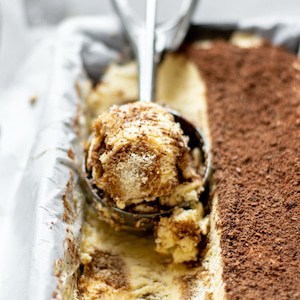Sourdough Puff Pastry made With Discard Starter
Homemade flaky sourdough puff pastry is delicious and decadent. Real butter rolled in the layers makes it so flavourful, light, and flaky.
I love sourdough puff pastry. Not only does sourdough’s signature tang add flavour, but the fermenting of the dough makes it easier to digest and roll out.
Sourdough may add on an extra day in time, but takes away some of the efforts of rolling that a traditional puff pastry requires.
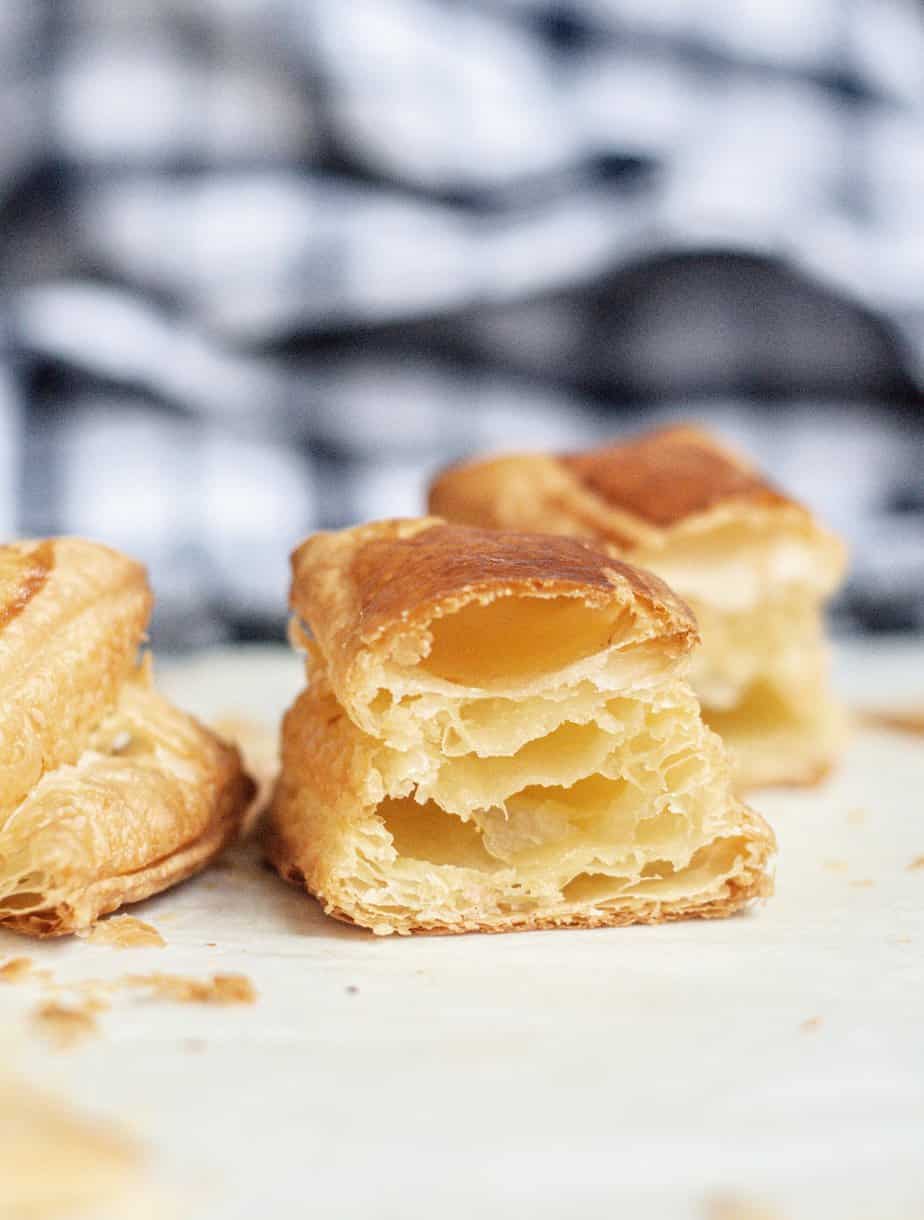
Discard starter pastry
There’s no need to feed your sourdough starter for this pastry, an unfed or discard starter is best.
The pastry relies on bacteria in the starter to ferment the flour, not the yeast component of a starter. It’s the water that evaporates from the butter that gives puff pastry its rise.
The sourdough puff pastry process
Puff pastry is rolled out and folded multiple times to create the iconic layers, and the ‘puff’. The fermented sourdough base dough is so pliable and doesn’t resist rolling the way that regular dough often can if it’s not allowed to rest.
Usually, puff pastry needs hours resting between each couple of turns to rest the gluten.
This sourdough puff pastry requires a shorter amount of refrigerated resting during the folds, only really to keep the butter chilled.
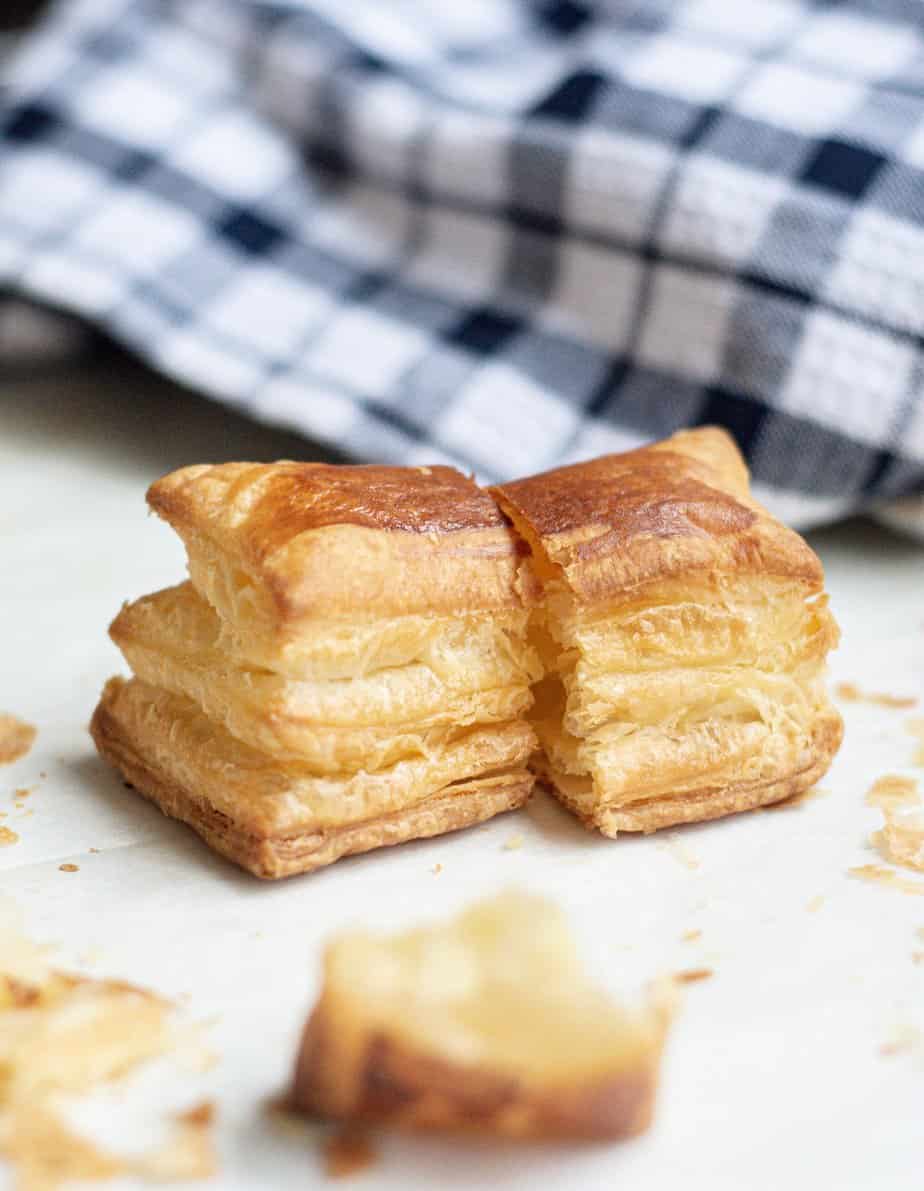
Day 1
The détrempe
Is the day to make the détrempe , the initial dough. It’s flour, sourdough starter, a little salt, melted butter, and cold water.
This is worked into a ball of dough, then placed in the refrigerator, in an airtight container for at least 8 hours and up to 20.
There’s no need for long kneading of this dough. Unlike sourdough bread dough, you don’t want to develop the gluten too much.
Day 2
Lamination
This is when a rather large amount of butter is rolled into the dough.
The dough is folded, turned, and rolled out about 6 times to incorporate the butter and establish those layers. In between some of the folds (every second fold), the dough is chilled to keep the butter cool.
The butter needs to stay cool so it doesn’t ooze out of the sides or melt into the dough. However it’s also important to keep it a little pliable, so it’s a similar consistency to the dough.
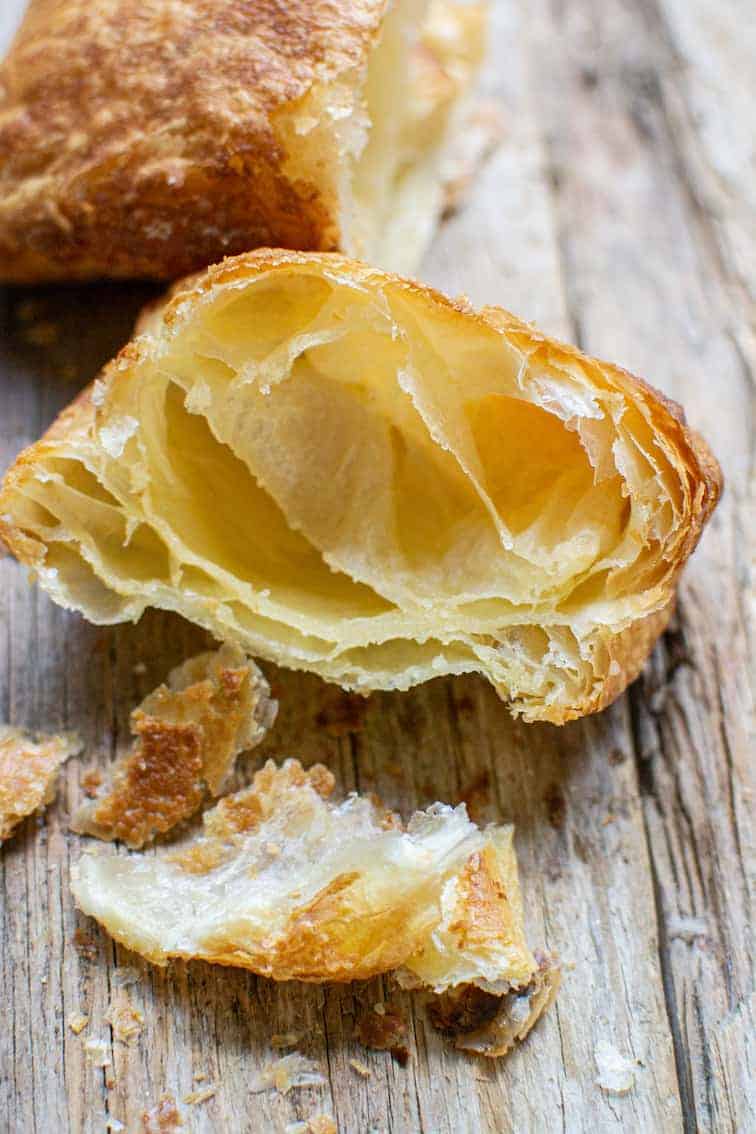
Lamination steps
Butter block
Take two sheets of baking paper and slice room temperature butter into 4 even slices. Lay the slices of butter in a square on one baking paper sheet. Place the second sheet of baking paper overtop. Using a rolling pin, roll the butter out into a 15 x 20cm (6″x8″) rectangle.
Alternatively, you can mix up the butter into a soft mixture and roll that out into a square.
Place the butter in the refrigerator for around 10 minutes to firm up, but ensure it’s still pliable and not rock hard.
Laminating
Firstly, take the détrempe dough from the refrigerator and roll it out in front of you into a 20 x 30cm (8″x12″) rectangle. Secondly, lay the cool butter on the dough on the bottom 2 thirds of the dough rectangle.
Fold over the top third, over the butter. Take the bottom third and fold that over like a pamphlet (the bottom third will be both dough and butter.)
The dough is now a horizontal rectangle. Turn it one-quarter turn clockwise so that it is now a vertical rectangle. Gently push with a rolling pin a few times along the length of the dough to help work in the butter.
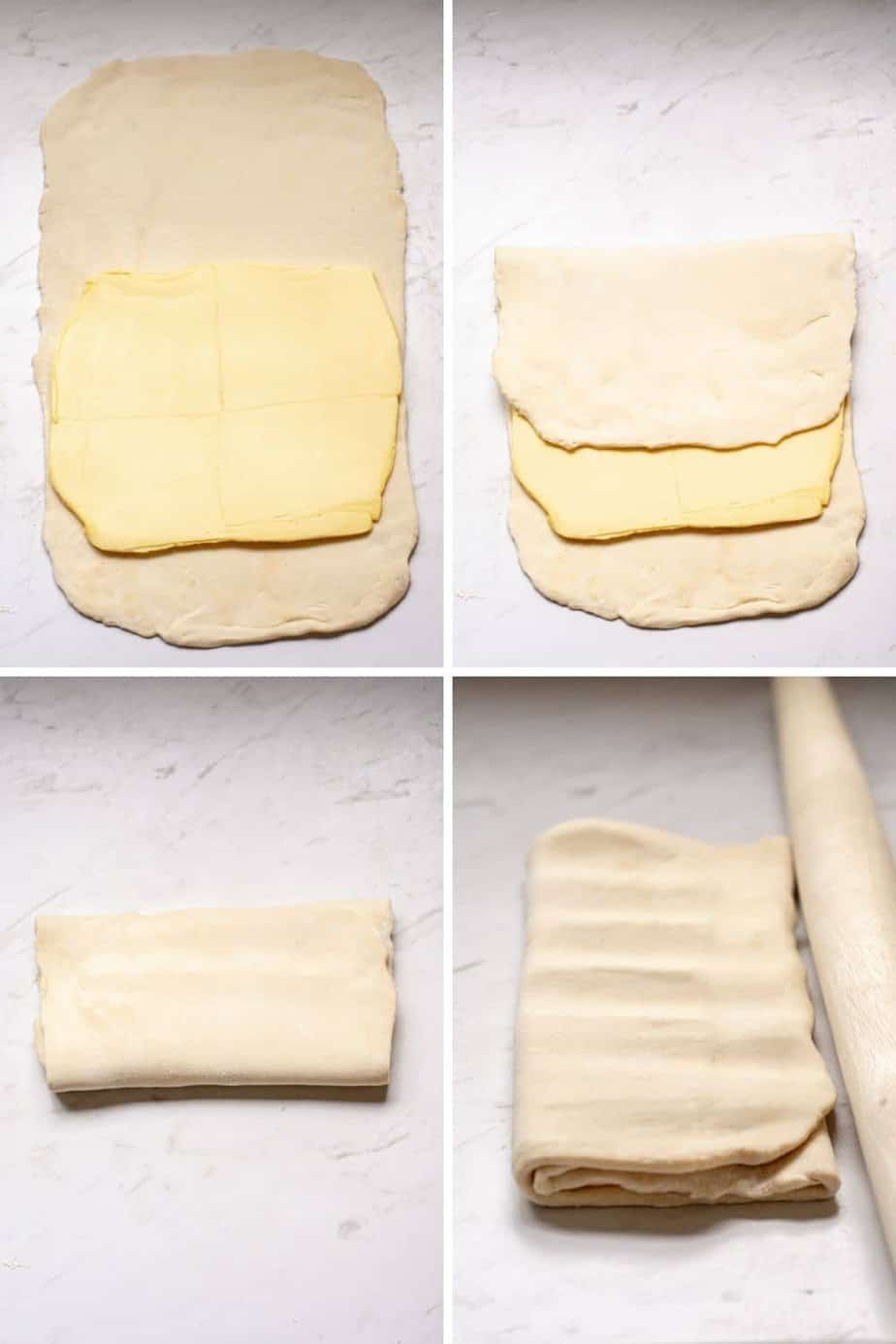
Roll the pastry out into another 20 x 30cm (8″x12″) rectangle and fold it once again into a pamphlet. Turn the pamphlet 90 degrees and roll it out again into a 20 x 30cm (8″x12″) rectangle, and fold it up into a pamphlet.
That was two turns and rolls in total. Now the folded dough needs to rest in the refrigerator for at least 30 minutes.
After 30 minutes remove it from the refrigerator and lay it out on the bench so it is a vertical rectangle.
Roll it out again into a 20 x 30cm (8″x12″) rectangle and repeat the folding, and rolling to complete another two turns. Chill the dough for at least 30 minutes.
Repeat this process one more time, so in total the dough was turned and rolled a total of 6 times.
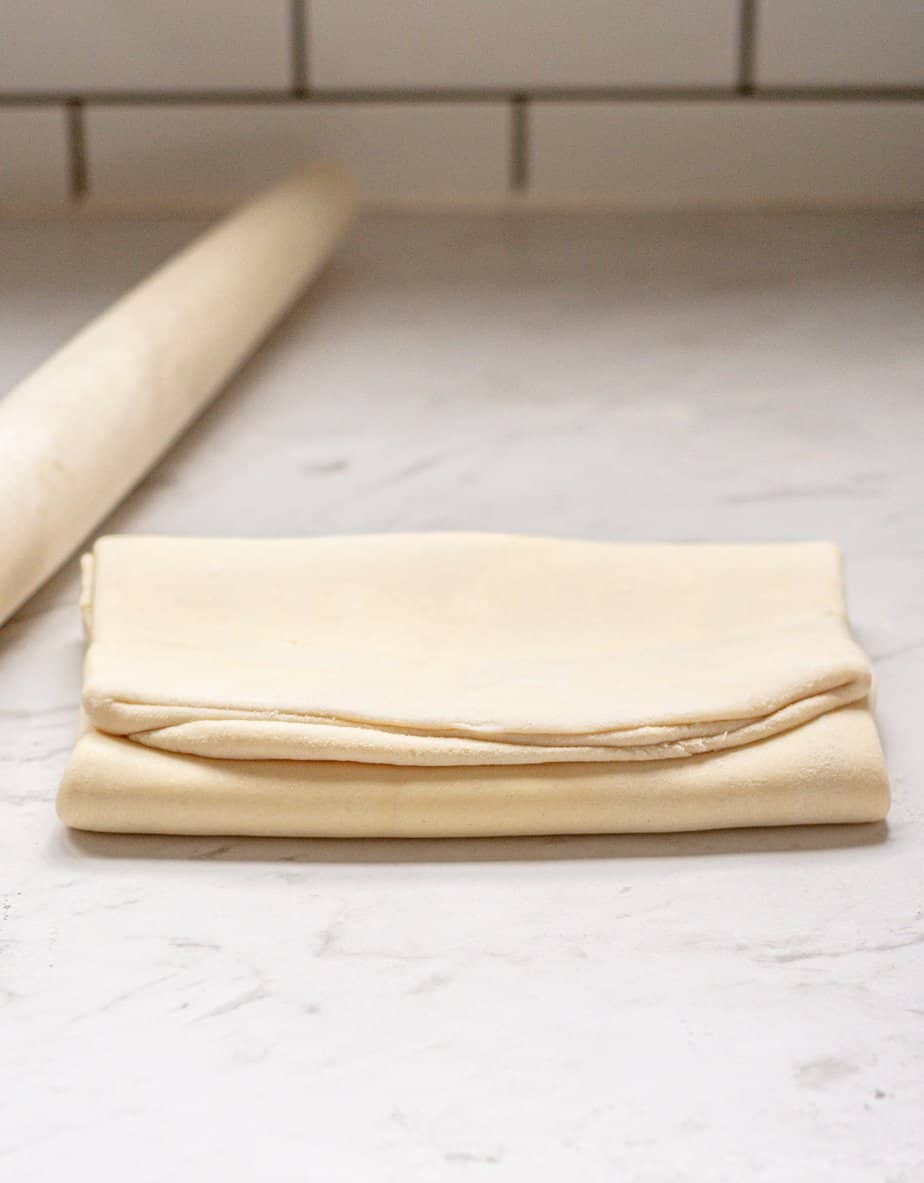
Chilling the dough
Chill the dough for a minimum of 2 hours in the refrigerator after the final turn.
Alternatively, it can be frozen for up to 4 months to use at a later date.
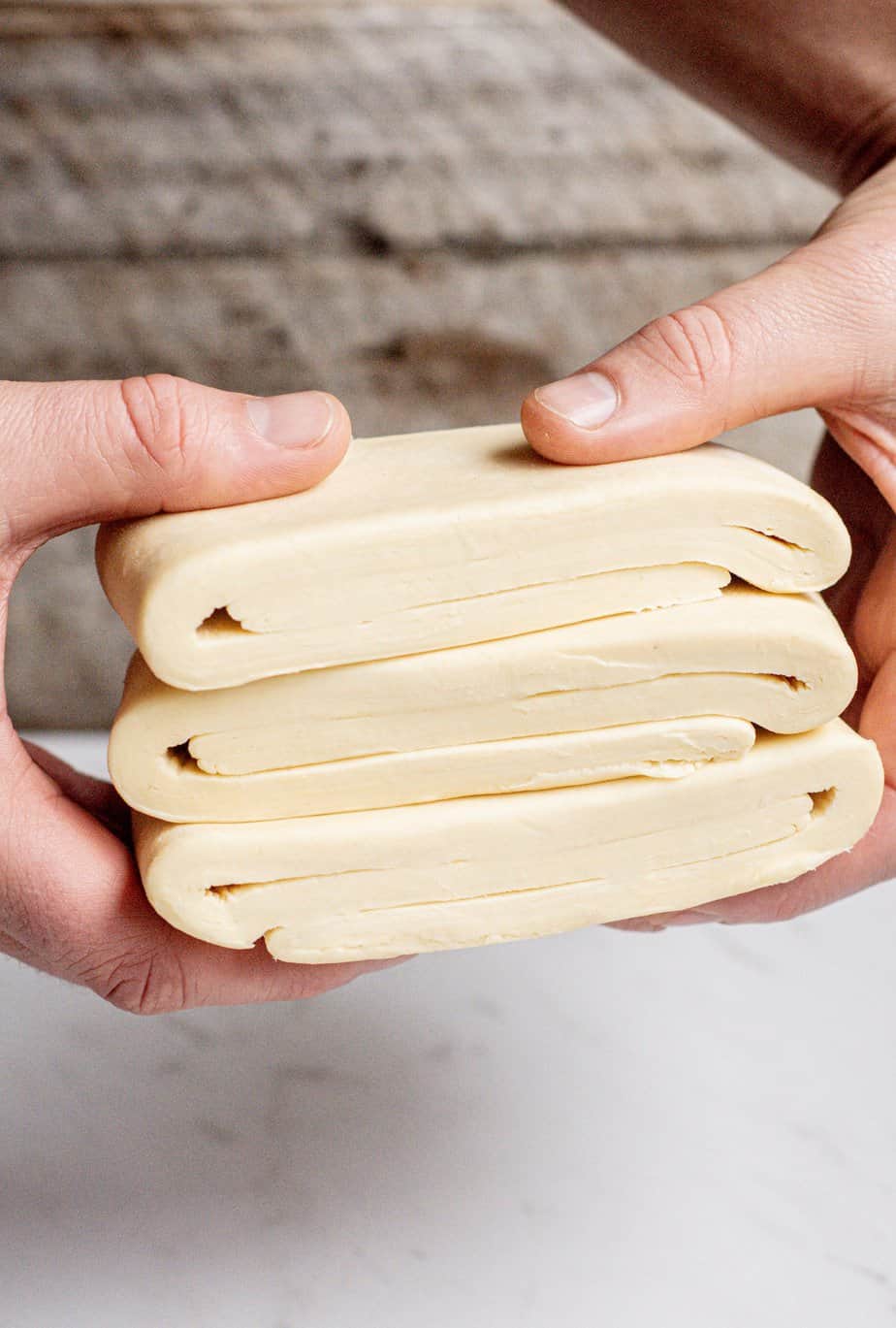
Cooking temperature and time
The cooking temperature and time will depend on the recipe you use the puff pastry in. Puff pastry does best in an initially hot oven of around 200°C/392°F for the first 10-15 minutes to allow the pastry to puff up nice and big.
Afterward, the temperature can be lowered to let the pastry finish cooking through. The time needed for this depends on how the puff pastry is being used.
A good puff pastry will quadruple in height, and butter leakage should not be an issue. If you find your pastry is leaking, or it’s not rising well it is probably the butter that hasn’t been incorporated evenly.

Storing
Unbaked puff pastry can be frozen for up to 4 months to use at a later date.
If you’re freezing it, let it thaw in the refrigerator or at room temperature before rolling it out. Don’t let the dough warm up so the butter doesn’t melt and the dough becomes too floppy to use.
This recipe makes only 500g. It can be easily doubled if you’d like to make extra pastry for future uses.
Puff pastry recipes
Two of my favorite ways to use puff pastry are by making flaky sourdough palmiers or mini apple hand pies! Or try this blueberry puff pastry galette!
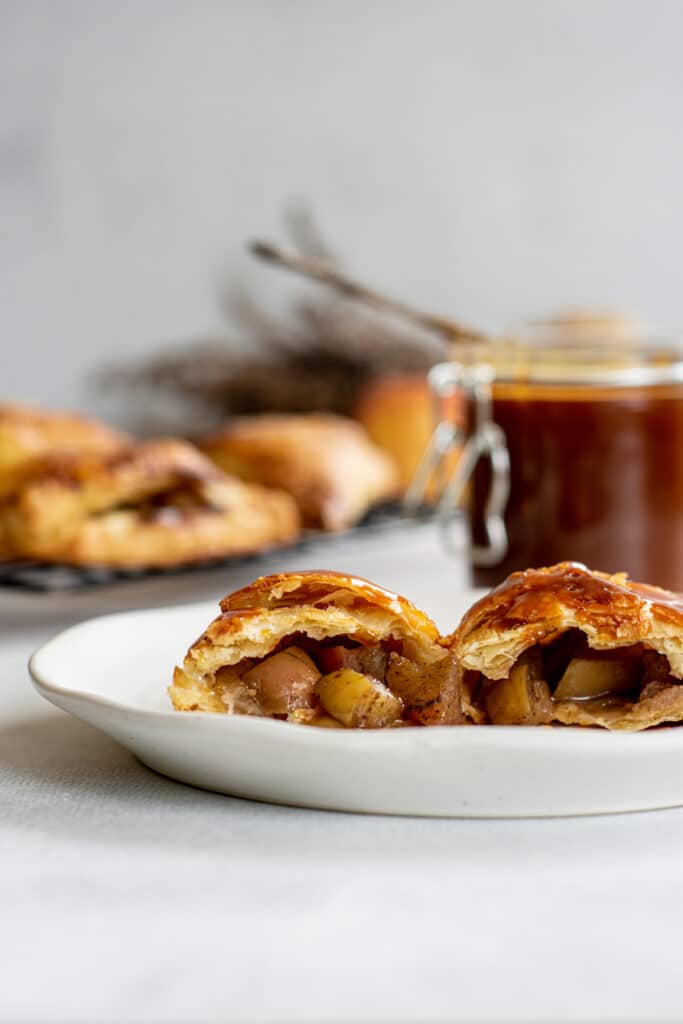
More sourdough discard recipes
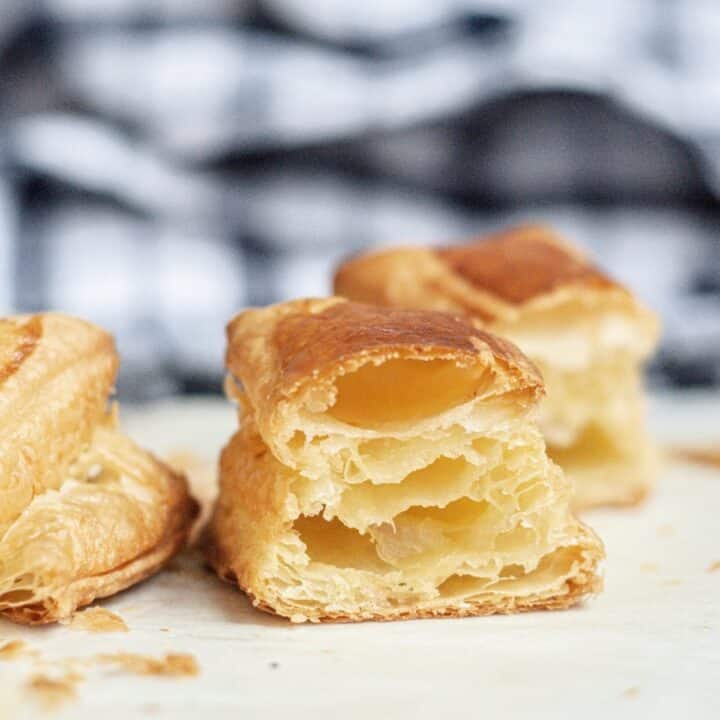
Sourdough Puff Pastry
Flaky sourdough puff pastry. This recipe makes 500g puff pastry. It can easily be doubled to make extra to freeze for future use.
Ingredients
- 225g all-purpose flour
- 60g sourdough discard starter
- 100-120ml cold water
- 1/4-1/2 tsp salt (1/4 if using salted butter)
- 230g butter
Instructions
- Day 1: Melt 30g of the butter and set aside. In a bowl, add the flour, sourdough starter, salt, water, and melted butter. Start with 100ml of the water and mix it until it forms a ball. Add in the remaining 20 ml if necessary. Knead it for 4-5 minutes into a smooth ball then place it in an airtight container in the refrigerator for 8-20 hours.
- Leave the remaining 200g of butter at room temperature ready for day 2.
- Day 2: Take two sheets of baking paper and slice room temperature butter into 4 even slices. Lay the slices of butter in a square on one baking paper sheet. Place the second sheet of baking paper overtop. Using a rolling pin, roll the butter out into a 15 x 20cm (6"x8") rectangle. Alternatively, you can mix up the butter into a soft mixture and roll that out into a square.
- Place the butter rectangle in the refrigerator for around 10 minutes to firm up slightly, but ensure it’s still a little pliable and not rock hard. If you're making the butter block in advance, take it out 15 minutes before you laminate the dough, to slightly soften. You want the butter and dough to be similar consistency.
Laminating
- Firstly, take the dough from the refrigerator and roll it out in front of you into a 20 x 30cm (8"x12") rectangle. Secondly, lay the cool butter on the dough on the bottom 2 thirds of the dough rectangle.
- Fold over the top third, over the butter. Take the bottom third and fold that over like a pamphlet (the bottom third will be both dough and butter.)
- The dough is now a horizontal rectangle. Turn it one-quarter turn clockwise so that it is now a vertical rectangle. Gently push with a rolling pin a few times along the length of the dough to help work in the butter. Roll the pastry out into another 20 x 30cm (8"x12") rectangle and fold it once again into a pamphlet. Turn the pamphlet 90 degrees and roll it out again into a 20 x 30cm (8"x12") rectangle, and fold it up into a pamphlet.
- That was two turns and rolls in total. Now the folded dough needs to rest in the refrigerator for at least 30 minutes.
- After 30 minutes remove it from the refrigerator and lay it out on the bench so it is a vertical rectangle.
- Roll it out again into a 20 x 30cm (8"x12") rectangle and repeat the folding, and rolling to complete another two turns. Chill the dough for at least 30 minutes.
- Repeat this process one more time, so in total the dough was turned and rolled a total of 6 times.
- After all the turns are completed, let the dough chill for a minimum of 2 hours in the refrigerator before rolling it for baking.
Baking Temperature and Time
- The baking temperature and time will depend on the recipe you use the puff pastry in. Puff pastry does best in an initially hot oven of around 220°C/425°F regular oven or 200°C/392°F Fan-bake for the first 10-15 minutes to allow the pastry to puff up nice and big.
- Afterward, the oven temperature can be lowered to allow the pastry to continue baking. How long it needs to be baked for depends on how it is being used.
Notes
The puff pastry can be frozen for up to 4 months to use at a later date. If you’re freezing it, let it thaw in the refrigerator or at room temperature before rolling it out. Don't let the dough warm up so the butter doesn't melt or the dough becomes too limp to work with.
This recipe makes only 500g. It can be easily doubled if you'd like to make extra pastry for future uses.
Nutrition Information:
Yield: 12 Serving Size: 1 gramsAmount Per Serving: Calories: 219Total Fat: 16gSaturated Fat: 10gTrans Fat: 1gUnsaturated Fat: 5gCholesterol: 41mgSodium: 339mgCarbohydrates: 17gFiber: 1gSugar: 0gProtein: 3g

